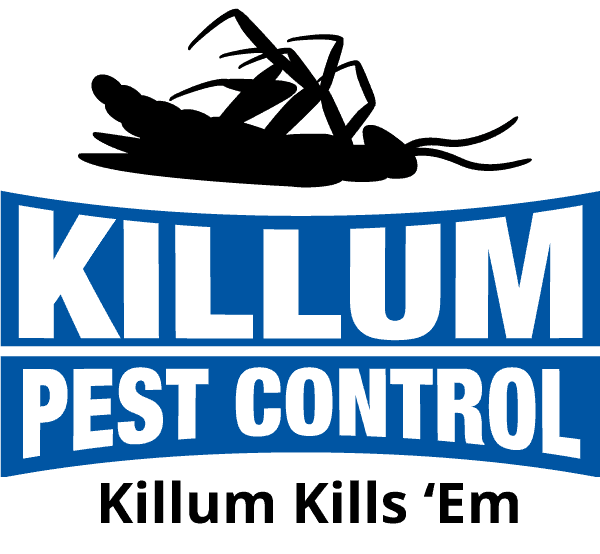Understanding the seasonal pest patterns in Texas is crucial for maintaining a pest-free environment in your business. Texas’s diverse climate means different pests become prominent at different times of the year. Recognizing these patterns can help us prepare and respond effectively to keep our commercial properties safe and clean.
Spring often brings a surge of pests awakening from winter dormancy. Summer’s heat can attract different kinds of pests that thrive in warm temperatures. Fall and winter also have their own unique pest challenges as certain insects and rodents seek shelter from the cooling temperatures. By knowing what to expect each season, we can implement targeted strategies to prevent and manage these pest invasions. This proactive approach ensures a healthier environment for our employees and customers.
Spring Pest Surge: Common Pests and Prevention Tips
As the weather warms up in spring, many pests come out of hibernation and look for food and shelter. Common spring pests in Texas include ants, termites, and flies. These pests can quickly become a nuisance and cause significant damage if not managed properly.
Ants are one of the most frequent invaders during spring. They often enter buildings in search of food and water. To prevent ants, we should keep kitchens and break rooms clean, store food in airtight containers, and seal any cracks and crevices where ants might enter. Regularly inspecting and maintaining the property can help keep ants at bay.
Termites also become more active in the spring. They can cause extensive damage to buildings by eating away at the wood structures. Preventing termites involves reducing moisture around the property, fixing any water leaks, and ensuring proper ventilation in crawl spaces. Regular termite inspections are key to catching an infestation early and preventing significant damage.
Flies can also be a problem during the spring as they start to breed and seek out food sources. Keeping trash bins sealed, disposing of waste promptly, and using fly traps can help reduce their presence. Maintaining clean and sanitary conditions in and around the property will also deter flies.
Summer Invasions: How to Manage Heat-Loving Pests
Texas summers are known for their heat, which attracts heat-loving pests like mosquitoes, cockroaches, and bees. These pests can pose health risks and disrupt business operations.
Mosquitoes thrive in warm, humid conditions and can carry diseases. To manage mosquitoes, eliminate standing water where they breed, such as in buckets, clogged gutters, and plant saucers. Using mosquito repellents and installing screens on windows and doors can also help keep them out of the building.
Cockroaches are another summer pest that can cause significant issues. They are attracted to food and moisture, making kitchens and bathrooms common hotspots. To prevent cockroach infestations, keep these areas clean and dry, store food in sealed containers, and fix any leaking pipes or faucets. Regularly taking out the trash and cleaning up spills immediately can also help.
Bees and wasps become more active in the summer as they search for food and build their nests. While they can be beneficial for pollination, their stings can be dangerous. To deter bees and wasps, keep sweet foods and drinks covered, and inspect the property for nests. If a nest is found, it’s best to contact a professional to safely remove it.
By implementing these preventative measures, we can manage summer pests effectively and keep our commercial properties safe and comfortable for everyone.
Fall and Winter Pest Behavior: What to Watch For
As temperatures drop in the fall and winter, many pests seek shelter in warmer places, including commercial properties. Common pests during these colder months include rodents, spiders, and silverfish.
Rodents such as mice and rats look for warmth and food when it gets cold. They can cause structural damage by gnawing on wires and insulation and contaminating food supplies. To prevent rodents, seal any gaps or cracks in walls, doors, and windows. Keep storage areas clean and clutter-free, and ensure food is stored in rodent-proof containers. Regularly inspect the property for signs of rodents, such as droppings and gnaw marks.
Spiders may also become more noticeable during the fall and winter. While most spiders are harmless, their presence can still be unsettling for employees and customers. To deter spiders, keep the property clean and free of clutter. Regularly vacuum and dust, especially in corners, storage areas, and other undisturbed places where spiders might build webs.
Silverfish are moisture-loving pests that can often be found in damp, dark areas like basements and bathrooms. They feed on paper, fabric, and other starchy materials. To prevent silverfish, reduce humidity levels by using dehumidifiers and fixing leaks. Keep areas well-ventilated and store valuable materials in dry, secure containers.
Year-Round Pest Control Strategies for Texas Businesses
Managing pests effectively requires a year-round approach tailored to the unique conditions of Texas. Here are some strategies that can help keep our commercial properties pest-free throughout the year:
1. Regular Inspections: Schedule routine pest inspections to catch early signs of infestations. This proactive approach can help identify potential problems before they become severe.
2. Sanitation Practices: Maintain high standards of cleanliness in all areas of the property. Regularly clean and sanitize kitchens, bathrooms, and storage areas to eliminate food and water sources that attract pests.
3. Integrated Pest Management (IPM): Implement an IPM strategy that combines multiple methods for effective pest control. This includes regular monitoring, proper waste management, physical barriers, and minimal use of chemical treatments.
4. Employee Education: Educate employees about pest prevention practices. Encourage them to keep their workspaces clean, report sightings of pests, and follow hygiene protocols to reduce the risk of infestations.
5. Professional Services: Partner with a professional pest control company for regular consultations and treatments. Experts can provide tailored solutions based on the specific needs of your property and ensure compliance with safety regulations.
By following these year-round strategies, we can effectively manage pests and create a safer, healthier environment for our business operations.
Conclusion
Understanding seasonal pest patterns in Texas and implementing effective prevention and control measures can make a significant difference in maintaining a pest-free commercial property. Each season brings its own set of pest challenges, from spring’s surge of ants and termites to summer’s heat-loving mosquitoes and cockroaches, and the fall and winter invasion of rodents and spiders.
By staying vigilant and adopting year-round pest control strategies, we can protect our properties and ensure a safe environment for employees and customers. Routine inspections, good sanitation practices, integrated pest management, and professional pest control services are essential components of a comprehensive pest management plan.
For expert pest control solutions tailored to your business needs, contact Killum Pest Control, Inc. Our team is dedicated to providing effective and reliable pest management services to keep your commercial property pest-free all year round. Reach out to us today to schedule an inspection and take the first step towards a pest-free environment.





